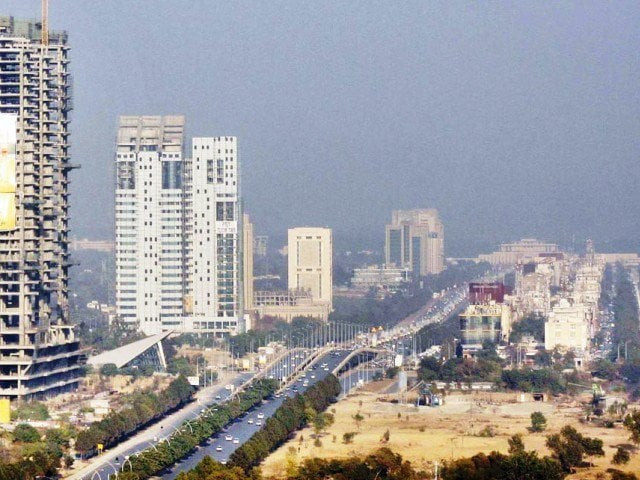Exploding urbanisation necessitates need for effective governance
39% of Pakistan’s population lived in urban areas in 2016 compared to 31% in 1990

Pakistan has witnessed a marked increase in the population living in urban areas over the years. World Development Indicators published by the World Bank shows that from 1990 to 2016, the population living in urban areas has more than doubled.
PHOTO:FILE
The report has claimed that 55% of the world population currently lives in urban areas and it is projected to grow to about 68% by 2050. This would be equivalent to an increase of about 2.5 billion people living in urban areas by 2050 with more than 90% of this increase coming from Asia and Africa.
Today, the most urbanised places in the world include Northern America (with 82% of population living in urban areas in 2018), Latin America and the Caribbean (81%), Europe (74%) and Oceania (68%).
Asia is catching up fast with the level of urbanisation and is now approaching 50%. In contrast, Africa remains mostly rural, with 43% of population living in urban areas.
Interestingly, the report has noted that the increase in urban population is highly concentrated in a few countries. Together, India, China and Nigeria are expected to account for 35% of the projected growth in the world’s urban population between 2018 and 2050.
With the projected increase in urban population in many Asian countries including Pakistan, there is a need for governments to implement effective governance to meet growing needs of housing, transportation, energy systems and infrastructure of a sustainable and inclusive city.
Urban growth: the case
of Pakistan
Pakistan has witnessed a marked increase in the population living in urban areas over the years. World Development Indicators published by the World Bank shows that from 1990 to 2016, the population living in urban areas has more than doubled.
In percentage terms, 39% of Pakistan’s population lived in urban areas in 2016 relative to 31% of the population in 1990. Moreover, there is an enormous pressure on the biggest city Karachi as it comprises almost 23% of the total urban population in the country.
Urban growth in Pakistan has been one of the fastest in the South Asian region. This is evident from the fact that in 2016, growth in Pakistan’s urban population had been 3.2% whereas the regional average was 2.6%.
Urbanisation rate in Sindh follows national trend
Moreover, whereas 31% of population of the entire South Asian region lives in urban areas, the proportion goes up to 39% in the case of Pakistan.
According to UN forecasts, by 2030 Pakistan will have two cities with a population of 10 million or more and nine cities with a population ranging between 1 and 5 million.
Urbanisation and effective governance
Globally, by 2030, the world is expected to have 43 megacities with most of them coming from developing countries. This calls for the need for effective governance in urban areas.
At a very fundamental level, policymakers must collect, document and analyse data on population residing in urban areas to understand some of the key trends of its movement and be able to solve crucial problems that beset urban dwellers.
Need stressed for urbanisation policy
Moreover, various government departments need to be closely connected and work in coordination to implement policies for housing, transportation, health and infrastructure to improve the environment and economic and social lives of urban residents.
This is the only means to ensure that urban areas have a level-playing field presenting sustainable models of growth and being inclusive for all.
The writer is a doctoral candidate at The Bartlett, UCL
Published in The Express Tribune, September 3rd, 2018.
Like Business on Facebook, follow @TribuneBiz on Twitter to stay informed and join in the conversation.


















COMMENTS
Comments are moderated and generally will be posted if they are on-topic and not abusive.
For more information, please see our Comments FAQ